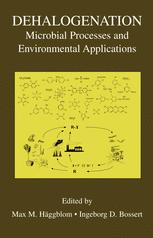

Most ebook files are in PDF format, so you can easily read them using various software such as Foxit Reader or directly on the Google Chrome browser.
Some ebook files are released by publishers in other formats such as .awz, .mobi, .epub, .fb2, etc. You may need to install specific software to read these formats on mobile/PC, such as Calibre.
Please read the tutorial at this link: https://ebookbell.com/faq
We offer FREE conversion to the popular formats you request; however, this may take some time. Therefore, right after payment, please email us, and we will try to provide the service as quickly as possible.
For some exceptional file formats or broken links (if any), please refrain from opening any disputes. Instead, email us first, and we will try to assist within a maximum of 6 hours.
EbookBell Team

4.8
104 reviewsHalogenated organic compounds constitute one of the largest groups of environmental chemicals. The industrial production of new halogenated organic compounds has increased throughout the last century peaking in the 1960s, and continuing in widespread use today. Organohalides are integral to a variety of industrial applications, including use as solvents, degreasing agents, biocides, pharmaceuticals, plasticizers, hydraulic and heat transfer fluids, and intermediates for chemical synthesis, to name a few. It is important to recognize the beneficial aspects of halogenated organic compounds, as well as their potentially deleterious impact on the environment and health. Recognition ofthe adverse environmental effects ofmanytypes oforganohalide compounds has led to efforts to reduce or eliminate the most problematic ones. Although organohalide compounds are typically considered to be anthropogenic industrial compounds, they have their counterpart in several thousands of natural biogenic and geogenic organohalides, representing most classes of organic chemicals. Natural sources account for a significant portion of the global organohalogen budget. This volume authored by recognized experts in the field provides a current perspective on how both natural and synthetic organohalides are formed and degraded, and how these processes are incorporated into a global halogen cycle. The focus is on microbial processes, since these play a major role both in the production and degradation, i. e. , cycling of halogenated organic compounds inthe environment. This book is organized into five parts. Part I, Introduction, provides a global perspective on the issues of organohalides and their fate in the environment.